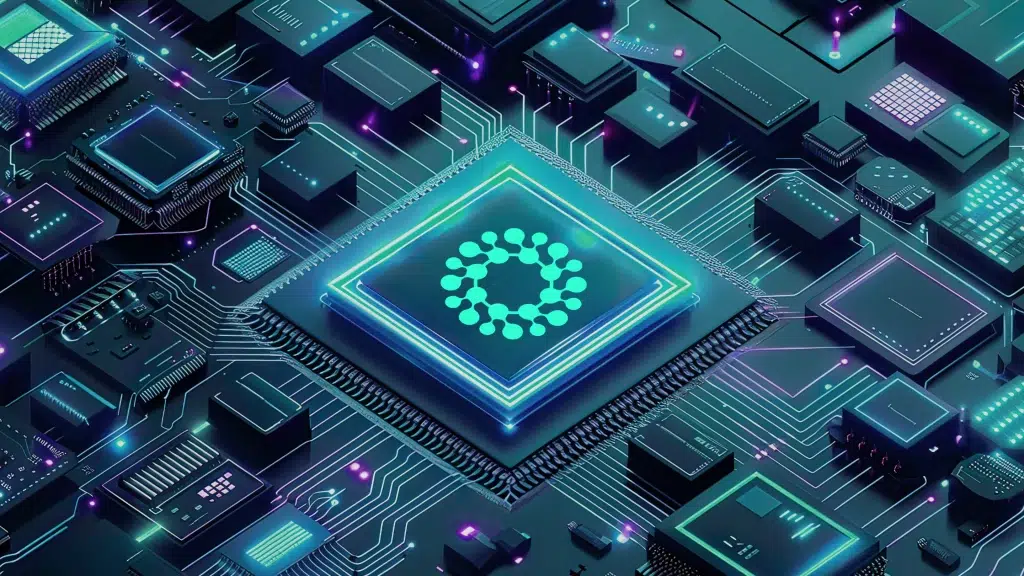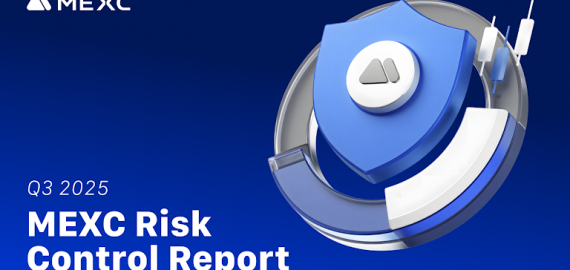Here’s How Ozone Chain Is Dealing With The Emerging Threat of AI to Core Pillars Of Blockchain


With the bulls returning in the crypto market, blockchain and altcoins are back on the global market’s radar. With Bitcoin teasing investors near $70,000 and the crypto market cap hinting at $3T in 2024, crypto’s finance and tech side is getting mainstream.
Similar conditioning happened in the last bull run in 2021, leading to big names like JP Morgan creating the Onyx blockchain and other industries adopting the tech. As history repeats, the refreshing bull run of 2024 boosts the blockchain game with a twist of Artificial Intelligence (AI).
OpenAI’s ChatGPT could be considered a big-bang event for AI in the general public. The AI craze made massive waves in every industry known, leading to situations like mass euphoria. In the crypto world, the top AI tokens like Fetch.AI, Singularity.NET, and Aptos surged in early 2024.
Although the crypto world remains optimistic about AI tech and tokens, it poses a potential threat to the blockchain underneath. As said by Ethereum’s founder, Vitalik Buterin, the blockchain trilemma highlights the three crucial aspects of a blockchain. These are Scalability, Security and Decentralization.
So, here’s how AI can shake the three pillars of blockchain and how the Ozone Chain plans on dealing with such threats:
Potential Threats AI Can Pose to Blockchain’s Three Pillars
1. Scalability
With the growing user base and global adoption, scalability is one of the biggest criteria for a blockchain to grow. Its ability to handle large and increasing numbers of transactions with nodes spread over the globe is crucial. Especially for the blockchain performance and the service built over it.
The growing and never-ending demand and the need for smooth and fast outputs will determine the acceptance and growth of a blockchain.
However, AI can be used to manipulate the speed and even hamper the transactions.
Threat: AI-Driven Resource Exhaustion
Resource Hogging: Hostile AI or trained models could target specific network nodes with high-frequency transactions. With the intention to overwhelm the network, AI-powered denial-of-service (DoS) attacks are a potential threat.
Threat: Complex Attack Strategies
Adaptive Attacks: With generative AI and AI tools, the technology is ever-adaptive, making it a perfect tool to launch an adaptive attack to evolve against defensive measures. Such attacks will make the conditions unfavorable for blockchain networks to maintain efficiency.
Ozone Chain’s Solution
Quantum Computing Integration: Ozone Chain uses the state of the art Quantum Random Numbers (QRNs) and Post-Quantum Cryptography (PQC) to increase the transaction processing speed and scalability. With the help of QRNs a truly random and unpredictable number improves the efficiency and security of cryptographic operations. This helps decrease AI resource exhaustion.
AI Optimization: With tested AI models with large data sets, Ozone Chain can optimize resource allocation and balance the load efficiently over specific nodes. This helps ensure that the network can efficiently handle huge transactions to overcome any high-frequency or complex attacks.
2. Security
One of the key reasons behind Satoshi Nakamoto’s use of blockchain for Bitcoin is the security it provides. Ensuring the integrity and immutability of data blocks and network protection. Adding a new chapter of threat and security, AI is a double-edged sword for any blockchain’s security.
Threat: AI-Powered 51% Attacks
Mining Centralization: Optimizing mining operations of a proof-to-work blockchain or other consensus mechanisms, AI can enable a single entity to gain the network’s majority control.
Threat: Sybil Attacks
Identity Fraud: Bots are a hassle for every platform despite the friendly approach over Telegram. With the power of AI, multiple bots with numerous fake identities or nodes could disrupt the consensus process. Hence, in the wrong hands, the AI bots can compromise the blockchain security.
Threat: Smart Contract Exploitation
Vulnerability Detection: Learning to code on itself and improving every day, AI can rapidly analyze long lines of code in a minute. With such power, it can try to manipulate smart contracts to find and exploit vulnerabilities. This could lead to unauthorized transactions, fund siphoning, or other dangerous actions.
Ozone Chain’s Solution
AI for Fraud Detection: The Ozone Chain’s AI is constantly monitoring and analyzing transactions in real-time. With the constant all-searching eye, it can detect and mitigate fraudulent activities quickly. Thus, the Sybil attacks or unauthorized smart contract manipulations can be resolved by AI.
Zero-Knowledge Proofs (ZKPs): The ZKPs are a key defense mechanism against AI and human attacks. It validates transactions and identities without revealing sensitive information. ZKPs maintain privacy and data integrity, even with sophisticated AI-based attacks.
3. Decentralization
Decentralization is the key USP of blockchain technology, which breaks the shackles of the Web 2 world. Distribution of the control and decision-making powers to the general masses through a wide participants network. It ensures that no single entity can dictate the rules or manipulate the system, promoting transparency and trust.
However, the existence of huge whales withholding dominance over their chain questions the decentralization aspect.
Threat: Manipulation of Governance Mechanisms
DAO Influence: AI models specifically trained to manipulate decision-making processes within DAOs can swing votes or decisions in favor of specific agendas. Similar to what happens over social media before any major elections, the DAOs can face a similar threat with the rise of such AI models. This will undermine the democratic character and working of such organizations.
Ozone Chain’s Solution
Quantum-Resistant Identity Verification: With the use of quantum-resistant algorithms, Ozone Chain ensures the identities within the network are secure and authentic. This reduces the risk of Sybil attacks, where an attacker could create multiple fake identities to sway network decisions.
Conclusion
Despite the multiple ways AI could hamper the working and shake up the blockchain, the generic viewpoint is optimistic. One of the major reasons is the compliable nature of AI with blockchain. With AI-powered blockchains, the above-mentioned threats can be resolved to a huge extent.
However, the threat of Quantum computing remains inevitable even for the AI-powered blockchain. So, for the next step in the future, the progression to a resistant blockchain, like the Ozone Chain, is necessary.
Build smarter, build faster with Ozone Chain. Trade OZO today on MEXC and join the ecosystem!
Disclaimer
In line with the Trust Project guidelines, please note that the information provided on this page is not intended to be and should not be interpreted as legal, tax, investment, financial, or any other form of advice. It is important to only invest what you can afford to lose and to seek independent financial advice if you have any doubts. For further information, we suggest referring to the terms and conditions as well as the help and support pages provided by the issuer or advertiser. MetaversePost is committed to accurate, unbiased reporting, but market conditions are subject to change without notice.
About The Author
Gregory, a digital nomad hailing from Poland, is not only a financial analyst but also a valuable contributor to various online magazines. With a wealth of experience in the financial industry, his insights and expertise have earned him recognition in numerous publications. Utilising his spare time effectively, Gregory is currently dedicated to writing a book about cryptocurrency and blockchain.
More articles

Gregory, a digital nomad hailing from Poland, is not only a financial analyst but also a valuable contributor to various online magazines. With a wealth of experience in the financial industry, his insights and expertise have earned him recognition in numerous publications. Utilising his spare time effectively, Gregory is currently dedicated to writing a book about cryptocurrency and blockchain.
















































